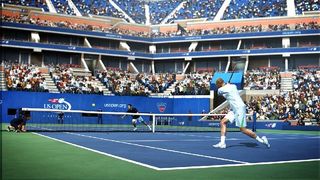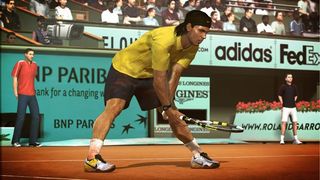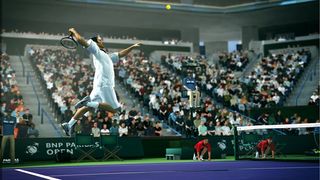While most tennis games are content to be arcadey and accessible, the Top Spin series has always gone deeper and more sim-like – for better or worse. The “worse” was arguably Top Spin 3, whose controls were so “realistically” complex that only die-hards could survive on the court. The “better” looks to be Top Spin 4. The entire play interface has been overhauled, returning it to the simple one-button-press gameplay of its contemporaries. Don’t think this a step backward, though: the goal this time around was to make something of a fighting game masquerading as a tennis sim.
It is, of course, a delicate balancing act. One of the things that has made the more cartoony fare on Nintendo systems and publisher Sega’s venerable Virtua Tennis games so pick-up-and-play-friendly has been the fact that one doesn't necessarily need to know how the game works to start proper volleys and ace serves. Top Spin 4 is looking to ape that accessibility without sacrificing a deeper game – hence, the fighting game analogy. An experienced Street Fighter 4 player, for instance, is still executing the same basic moves as a newcomer, but they've layered in strategy of movement and timing to the point where they wipe the floor with noobs. They haven't necessarily done anything different from lesser players, they just do it better and understand the mechanics in a way that gives them the edge.
This is the core of what Top Spin 4 is trying to duplicate; simple controls that offer depth for those who want it but don't force newcomers to spend hours honing that titular top spin shot just to win a game. Instead, things are relegated to the four face buttons for top spins, lobs, smashes and slices as one would expect, but by doing things like pulling the triggers on the HD systems, one can swap feet for an easy inside-out shot to overcome a weak hand or load up a drop shot to get players closer to the net.

The result, as we discovered in our short play time, was indeed promising. Gone is the frustration of juggling buttons just to get on top of a volley that's quickly losing control; quick button presses will show a simple crosshairs icon indicating the sort of default move was played out, but more skilled players can literally charge up the shot and, after processing the timing of the button release, can send the ball back across the net with more precision and power. It becomes a dance, then, of proactively gaining position and getting set to return a shot exactly how and where you want it, and like any good fighting game, the idea is extremely easy to grasp, but actually executing will take not just practice, but familiarity with the other player.
To help matters, a nigh-ridiculous amount of extra animation content has been added - 4,000 new animations in all, many of which are “signature moves” unique to individual players. These help the virtual versions of both current and legendary players play in their own, distinct way. There's 25 of them in all (including legends like Andre Agassi who graces the cover -- including in pre-order-exclusive mullet form), playing in 42 different stadiums (7 of which are licensed) across the usual clay, grass and concrete surfaces.

These animations are critical because they make sure that no matter the situation, no matter what the character’s gait, momentum and (in the right situation) signature style happen to be, they'll be able to pull off a move that seamlessly transitions from a stumble or a sprint into whatever particular play you're trying to pull off. Should you be set up for it, Pete Sampras can indeed return a shot between his legs, though the likelihood of it happening is extremely contingent on the situation being all but perfect for that animation to play out.
One more thing we should note: the audio was surprisingly solid. Plenty of time was spent recreating the various environmental reverberations, of course, and the grunts and cries as the players slam the ball back and forth are there and sound great. The biggest gains, however, only let themselves be known during certain situtations; as particular volleys start to build in intensity or successive points are pulled off with increasing tension, the crowd will get into it, their chatter and cheers rising during daring saves or hard-fought points. If the game is nothing but aces and domination by one player, they'll have little to get into, and thus the game will stay relatively quiet.

If Top Spin 3 was a step backward for the series (and by 2K's own admission it wasn't as good as it could or even should have been), then what they've prepped for the March 15th follow-up is at least two steps forward - two apparently motion-captured steps, but steps nonetheless. We'll have the chance to delve deeper into the various modes and players on offer as things move closer to March, so check back soon.
Jan 31, 2011
